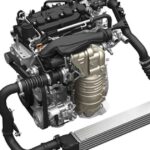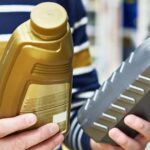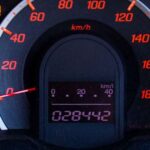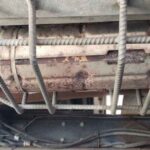Automotive paint drying time varies widely depending on several factors. Car paint typically takes 24-48 hours to be dry enough for driving, but full curing can take 30-90 days. Waterborne paint often dries faster than solvent-based paints.
Environmental conditions like temperature and humidity significantly impact drying times. Professional paint booths with controlled environments can speed up the process.
The Xcelerator system can reduce drying time by up to 35%. It’s crucial to allow adequate drying time to prevent paint defects and ensure a durable finish.
Proper care during the curing period, including avoiding car washes and extreme weather, is essential for optimal results.
The Basics of Automotive Paint Drying
Before we delve into drying times, it’s essential to understand the types of car paint commonly used and the factors that affect their drying process.
Types of Automotive Paint
- Waterborne paint: Eco-friendly and increasingly popular
- Solvent-based paints: Traditional and still widely used
- Urethane: Durable and resistant to chipping
- Enamel: Known for its glossy finish
Each type has its unique drying times and characteristics, influenced by various factors.
Factors Affecting Drying Time
- Temperature
- Humidity
- Paint type
- Thickness of application
Paint drying occurs in stages, each crucial for a perfect finish:
- Flash drying: Initial evaporation of solvents
- Surface dry: When the paint is no longer sticky to touch
- Hard dry: Complete curing of the paint
How Long Should Car Paint Dry Before Driving?

The million-dollar question: when can you hit the road after a paint job? While it varies based on paint type and conditions, here’s a general timeline:
| Paint Type | Drive-Safe Time | Fully Cured |
| Waterborne | 24-48 hours | 30-60 days |
| Solvent-based | 48-72 hours | 60-90 days |
Driving too soon risks:
- Paint chips
- Dust and debris sticking to the surface
- Uneven drying
“Patience is not just a virtue in car painting; it’s a necessity for a flawless finish.” – Anonymous Shop Manager
How Long Does It Take For Paint To Dry On A Car Bumper?
Car bumpers present unique challenges due to their:
- Flexible material
- Exposure to road debris
- Complex shapes
Generally, bumpers take 20-30% longer to dry compared to flat surfaces. A waterborne paint on a bumper might be touch-dry in 2-3 hours but require 72 hours before it’s safe to use the car.
More Post:
Car Axles: The Unsung Heroes Of Your Vehicle’s Performance
Can You Speed Up Paint Drying?
Yes, you can! Here are some pro tips:
1. Control the Booth Temperature
Optimal spray temperature ranges from 60°F to 75°F (15°C to 24°C). A well-regulated heating system can significantly reduce drying times.
2. Decrease Cabin Humidity
High humidity is the enemy of fast drying. Aim for 50-60% relative humidity in your paint booth.
- Use dehumidifiers
- Ensure proper ventilation
- Consider a climate control system
3. Use a Handheld Dryer
Infrared dryers can speed up the process, especially for spot repairs. Be cautious not to overheat the surface, which can lead to paint defects.
4. Install the Xcelerator
The Xcelerator is a game-changer in automotive painting. This advanced system can reduce drying times by up to 35%, allowing for faster turnover without compromising quality.
How to Paint More Cars Per Day
Efficiency is key in any auto body shop. Here are some strategies to increase your output:
- Streamline your prep process
- Use fast-drying primers
- Invest in quality equipment
- Train your team in efficient techniques
Benefits of Installing an Additional Paint Booth
- Increased capacity
- Ability to handle rush jobs
- Potential for specialization (e.g., one booth for waterborne paint, another for solvent-based paints)
Choose the Right Paint Booth for Your Shop
Selecting the appropriate paint booth is crucial for efficiency and quality. Consider:
- Size of vehicles you typically work on
- Volume of work
- Budget
- Energy efficiency
Become an Accudraft Insider
Joining Accudraft’s community offers:
- Access to latest technologies
- Training opportunities
- Networking with fellow professionals
Post-Painting Care: Protecting Your New Finish
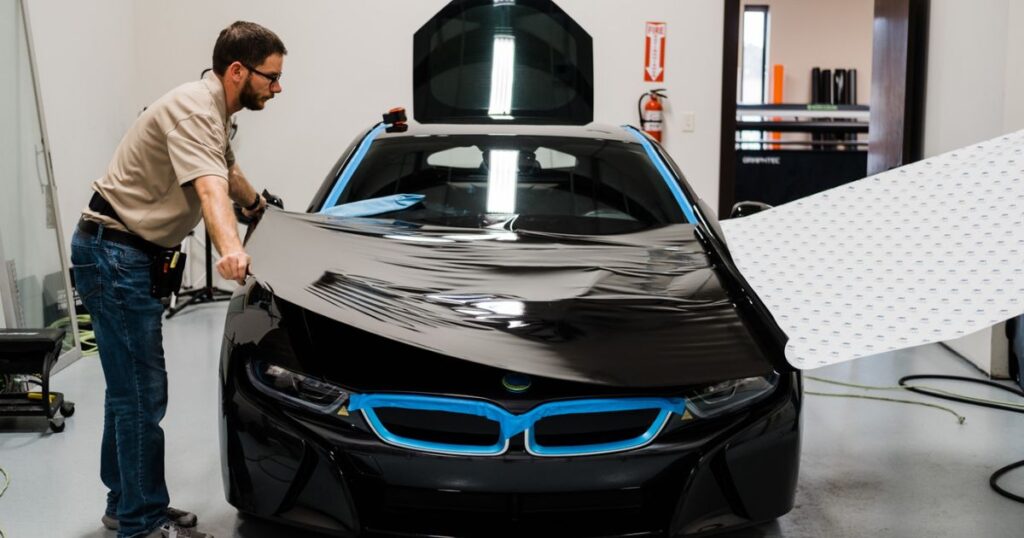
Avoid Using a Commercial Car Wash for 30 to 60 Days
Commercial car washes can be too harsh on fresh paint. Instead:
- Hand wash with mild soap
- Use soft microfiber cloths
- Rinse thoroughly with clean water
Try to Avoid Extreme Weather
Extreme temperatures can affect the curing process. If possible:
- Park in a garage
- Use a car cover
- Avoid prolonged exposure to direct sunlight
Stay Away From Trees
Tree sap and bird droppings can etch into fresh paint. Park wisely to protect your new finish.
Stay Away From Wax or Polish
Wait at least 30 days before applying any wax or polish. Premature application can interfere with the curing process.
How Long Does It Take To Paint A Car?
Let’s break down the entire process:
1. Preparation
- Surface cleaning and sanding: 2-3 hours
- Masking and taping: 1-2 hours
2. Priming
- Application: 1-2 hours
- Drying: 1-2 hours
3. Painting
- Base coat application: 1-2 hours
- Drying between coats: 20-30 minutes each
4. Clear Coat
- Application: 1-2 hours
- Initial drying: 24 hours
5. Final Steps
- Buffing and polishing: 2-3 hours
- Quality checks: 1 hour
Total time: 2-3 days for a full car paint job, not including full curing time.
Also Read More Post:
Understanding Insurance Payouts For Totaled Vehicles
FAQs about Automotive Paint
How long does automotive paint take to cure?
Automotive paint typically takes 24-48 hours to cure, but full curing can take up to 30 days.
How long to wait to drive a car after painting?
Wait at least 24 hours before driving a freshly painted car to ensure the paint is set.
How long does car paint need to dry before rain?
Car paint should dry for at least 24 hours before exposure to rain to avoid damage.
How to make car paint dry faster?
Using heat lamps or infrared heaters can help accelerate the drying process of car paint.
Does AC make paint dry faster?
Air conditioning can help by reducing humidity, but direct heat sources are more effective for faster drying.
Conclusion
Automotive painting is both an art and a science. Understanding the intricacies of paint drying can help you achieve better results, whether you’re a DIY enthusiast or a professional shop manager. Remember, patience is key, but with the right techniques and equipment, you can optimize your process without compromising quality.
“Quality is never an accident; it is always the result of high intention, sincere effort, intelligent direction and skillful execution.” – William A. Foster
By following these guidelines and investing in quality equipment like the Xcelerator, you can ensure your paint jobs are not only beautiful but also durable and efficient. Happy painting!


